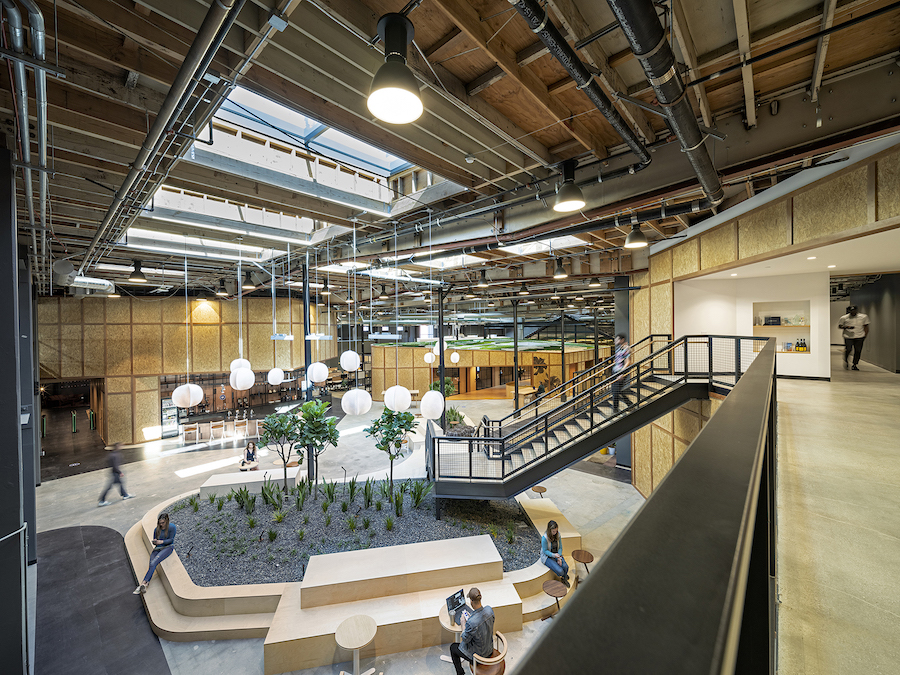
Nine years ago, SMa.r.t wrote a series of articles addressing the adaptive re-use of existing structures. We titled one “Shape Up,” analogizing development with bodybuilding – physical fitness. Lots of life left in the old bones, and with the proper diet and physical effort, a long, healthy life ahead, both for the structure as well as the impact on the environment, the residents, and their quality of life.
In revisiting those articles these several years later, it becomes even more clear how unfortunate that ideologically driven city councils never pushed back when developers began to influence state legislation and housing density laws. We are now confronted with state laws that allow developers to far exceed our zoning height and density regulations, and we clearly see the results springing up all around what used to be our very livable, low-rise beachfront town.
Now, in what would seem to be about nine years late, the city has formed an Adaptive Re-use Technical Working Group to study…adaptive re-use. Perhaps some of our earlier observations and concepts can find their way into whatever net result may evolve, though state allowances will almost certainly continue to push developers to maximize building, with little regard to livability or the environment and with return on their investment their only motivation. The current density bonuses are allowed by providing a very limited number, essentially 10%, of “low-income” units in their developments to then double the code-allowed number of units. And then, with another small number of “moderate income” units, can then double the double. And the city can’t say no. But, we will see what, or if, the Adaptive Re-use Working Group can, in fact, make a difference in the ‘tear down and build to the maximum’ philosophy that has permeated our state and city planners for the last 20 years. There is to be a presentation to the City Council on 6/11 for a new ARO (Adaptive Reuse Ordinance). Let’s hope there can be positive incentives to deter the teardown, build tall, maximize mindset that has obviously been driving development in Santa Monica, and generally with little pushback from the City.
So what is ‘adaptive re-use’? In an earlier column, I wrote, “It’s Re-purposing. Remodeling. Addition. Re-habilitating. Restoring. All these phrases are terms that describe breathing new life into older buildings. Some developers and building industry professionals talk of buildings as having a fifty-year life cycle because maybe the floor creaks and, windows leak, or pipes drip, and energy efficiency is way down. Maybe not unlike looking in the mirror at age 40, seeing a bit of a bulge here and there, lines around the eyes, feeling lethargic and lacking energy, etc. I imagine many of the readers would be disturbed to view themselves as having only a fifty-year lifecycle and, therefore, say it’s time to demo the body. More likely, with the best of intent, it is off to the gym to re-build the body and to restore the energy through a healthy diet.
Others seem to find it easier and simpler to just demolish and re-build new. A reflection of what was an American uniqueness, that of being a ‘disposable’ society. We didn’t so much fix things as throw them away and buy, or build, new. But there are very few buildings that can’t be economically updated and made energy efficient, and by not tearing down and hauling away debris to a landfill, much more sustainable. There is this trend to justify building new to LEED standards of gold and platinum, etc., and building to those standards is good, but suffice it to say, ‘the greenest building is the one not torn down.’
Additions, energy efficiencies, and seismic upgrades can generally be managed and economically implemented. Had we had a zoning code in place that contained language that
encouraged re-purposing buildings to include a percentage of affordable housing, it could have become the perfect poster child for what ideally should occur on the boulevards. Adaptive re-use is probably the most efficient and ‘green’ way to produce more housing, and needn’t result in the taller and taller structures we now see on Lincoln and coming soon to your neighborhood.
So we need a new, healthy, and trim zoning code that says, “Go to the gym and reinvent, get fit, re-energize, breathe deep, and increase the durability, endurance, and life span of our buildings.” Simplify the code, encourage, and incentivize existing office uses to be re-purposed for housing when the opportunity arises. Buildings do not have to face a ‘mid-life’ crisis with the only option one of being removed and replaced by something 4 or 5 times as large that is going to crowd everybody out to the sidewalk and to the surrounding residences, looming over them and casting them in shade for good parts of the day. A healthy environment is one with fresh air and blue skies, especially in a coastline beach community such as ours.
Paraphrasing one of our earlier columns, “Santa Monica residents are being squeezed by two related realities: 1) increasing property values affordable only to a small minority, and 2) a lack of low-income affordable housing caused by the City’s housing/job imbalance. This imbalance has been created by four decades of policies that have incentivized commercial over residential construction. Concurrent with the commercial space boom, there has been a rush to create housing for the well-to-do at the expense of “affordable” housing. These units will not be affordable for lower-income residents for three reasons: 1) new construction will always be more expensive than adaptive reuse; 2) the demand for beachfront housing, and the ability of those of higher income to pay the high Santa Monica market rates; and 3) land values and construction costs in our already dense city will continue to escalate because no amount of new housing will result in lower home prices or rents. Even when we deed restrict a small fraction (about 10% on average) of those units to qualified low-income residents, the affordable portion is too small to impact prices in such a competitive marketplace. In other words, we cannot build our way to affordability.
If you believe, as we do, that affordable housing is a worthwhile goal, about the only way to create that affordable housing is with subsidies. The question then becomes what kind of subsidy, how big, and for and by whom? One solution would be, as discussed, for a new planning code to incentivize the conversion of existing office buildings to mixed-use/residential. This would have several advantages: It’s the fastest, greenest, and least disruptive way to create housing. These conversions could be done as tenant improvements in generally less time it takes to build a new building. Office buildings are usually designed to facilitate the reorganization of their spaces, so this transition is usually not difficult and may not require significantly adding height and area to the existing structure.
But, since the State’s intervention, things have changed…along comes the State (think ‘candyman’) with a little ‘juice’ (bonus density laws) that developers have been offered – ‘anabolic steroids’ to maximize development – get big! Fast! With less hard work and quick ‘results’ – e.g., the State allowable “Bonus Density” laws and the obscure “Builders Remedy,” where, if the State rejects a city’s Housing Element submittal, a developer is essentially permitted to build to virtually any height and size they so desire until such time as the City’s Housing Element is deemed in compliance – so hey!, let’s ’Get High’ on the ‘juice’ and get pumped up. Ignore that in Santa Monica, we have an approximate 10+% vacancy rate, with a declining city and state population, but yet the State requires us to build, at minimum, another 9000 to 13,000 units (about a 25% population increase). And there is not much the city or residents can do about it – except perhaps fight the State in court over the failure of the Bonus Density laws to provide what they were purportedly designed to do – create affordable housing. Don’t work out growth based on a healthy diet of actual data-driven problem-solving design development needs; just get BIG, fast – do it on steroids. But steroids are a drug, and addictive, and have dangerous side effects. Beware!
Bob Taylor, AIA
for SMa.r.t.
Send comments to santamonicasmart@gmail.com
Santa Monica Architects for a Responsible Tomorrow
Robert H. Taylor AIA, Architect; Dan Jansenson, Architect & Building and Fire-Life Safety Commission; Thane Roberts, Architect; Mario Fonda-Bonardi AIA, Architect; Samuel Tolkin Architect & Planning Commissioner; Michael Jolly, AIR-CRE; Marie Standing, Resident; Jack Hillbrand AIA, Architect;
For previous articles, see www.santamonicaarch.wordpress.com/writing













